The Cornell Lab Bird Academy › Discussion Groups › Joy of Birdwatching › Activities: Exploring Birds
-
This Northern Flicker has really enjoyed the suet cakes we put out this winter. We have an active bird feeder and a wide assortment of birds. This class is helping us to tell the difference between the large number of brown birds that visit.

-
I just saw a Northern Flicker for the first time this week. Awesome sight. Thanks for sharing.
-
-
Have enjoyed introductions to great variety of birds reading all entries submitted below. Thank you.
-
 Goldfinch and Common Redpolls enjoying a Christmas gift
Goldfinch and Common Redpolls enjoying a Christmas gift -
Imagine if this trained them to see owls as prey.
-
-
 Tree Swallow
Tree Swallow -
I spent an afternoon photographing humming birds (ruby throated). This is my favorite of a female.

-
Blackbird I photographed when I took my grandson to the local Zoo.

-

-
Activity #1 - It's so difficult to pick favorites from the Wall of Birds, even when you're allowed to pick more than one! I find parrots endearing, right down to the scratchy quality of some of their vocalizations (that might be more difficult for others to hear), so naturally the Blue-and-Yellow Macaw, Kakapo, and Sulphur-Crested Cockatoo make my "favorites" list. Of the non-parrots, I found myself drawn to the Atlantic Puffin and Superb Lyrebird, both of whom have an endearing appearance and vocalizations as well. Still, there are so many beautiful birds on this wall that I can go about but it would take awhile to get through them all! Activity #3 - Of my neighborhood birds, my favorite is the California Scrub Jay as the pair (with the male being a bit bolder personality-wise) won me over with their charisma and boisterousness. I still recall the first time I tossed in-shell unsalted peanuts to them while they were perched on a telephone wire. The male bobbed his body up and down a couple of times and made a dive for the peanuts which were just several feet away from me on the ground. Ever since then, as I've continued giving them peanuts, they'd make a soft "kuk kuk" vocalization around me. So cute. I also find their colors and markings beautiful.
-
Activity #1. I think my favorite bird would have to be the Albatross, the shear size and grace of these birds always astonishes me, and I'd love to see one in person one day. Activity #2. After going outside yesterday we were introduced to quite the variety of raptors, "other" songbirds, waterfowl and woodpeckers. Namely a massive group of bald eagles that decided to fly through the area, and a small kestrel chasing around a red tailed hawk. Other songbirds would have to belong to all the bohemian waxwings which another birder on the trail was kind enough to aid in ID'ing. The waterfowl seen were a bunch of common goldeneyes and a couple of mergansers which made their way into the flock. Finally a pileated woodpecker was seen hammering away at a branch before we were off again. Activity #3. My favorite neighborhood bird would have to belong to that kestrel. The speed and agility of the bird will always amaze me, along with it's persistant nature to chase down any other raptor in the area make it an easy favorite.
-
Activity #1. My favourite bird is the Albatross. The year before Covid our family visited the Cornell Lab and I stood right in front of the painting of this beautiful bird. I was in awe that all the birds are life-sized on the mural. It is a very special place to visit. Put it on your "Bucket List". Activity #3. It is very hard for me to choose a favourite bird. We are fortunate to live in a rural area. Our yard is large and we have lots of trees and shrubs for bird habitat. In winter, I love red-breasted nuthatches. In summer, I love the orioles and house wrens.
-
Activity #3. I am a new birder. Yesterday, I confirmed identification of a large bird I've heard and seen swooping across the park outside my front windows over the past several weeks. I live on the third (and top) floor of a vintage building in Oak Park, Illinois. The building is just north of the Village's small downtown main street and faces longways into a block-long and -wide park with many mature trees. A fellow bird enthusiast in the building told me there is a Cooper's Hawk living in the park, but after hearing the bird's call and comparing to the bird calls on Merlin, I knew that wasn't the bird I have been hearing. During my walk in the park yesterday, the bird flew overhead and landed in a large nest high up in a tall Oak, and in a completely different location from where I assumed the bird was nesting. As I watched the bird and pointed it out to a friend who was with me, it left the nest to fly to a tree closer to us, which gave us a great view. Had the bird noticed us looking and was drawing attention away from its nest? I burned the bird's image into my brain and checked my Kaufman's guide as soon as I got back inside. A Red-Shouldered Hawk it is, as I had identified on Merlin from the bird calls! I couldn't get a good photo on my cell phone camera, but this bird looks exactly like the photo of the adult Red-Shouldered Hawk in the guide. Also according to the guide, this bird can live in the area all season but is rare. What a treat!
-
Activity 1) Wall of birds. For me, the most remarkable birds are: Sunbittern (Eurypyga helias), Jocotoco Antpitta (Grallaria ridgelyi), Paradise tanager (Tangara chilensis), Common Potoo (Nyctibius griseus), Green Broadbill (Calyptomena viridis), Three-wattled Bellbird (Procnias tricarunculatus), Schlegel's Asity (Philepitta schlegeli), HamerKop (Scopus umbretta) and Ornimegalonyx. Activity 3) My favourite neighborhood bird is "Rabilargo" (Cyanopica cooki). These birds are very social, extroverted and intelligent.

-
#1. My favorite bird with difference are shoebills!!!! They are so cool looking, they feel so ancient. I love their expressions! #2. Went on my first birding trip two days ago and came back with way more species than what I expected to find!! Caught on photo an European Robin, a bunch of Yellow-Legged Gulls and a Little Egret, among others.
 #3. In my neighborhood we mainly have Common Pigeons, and honestly they might as well be my favorite ones anyway. They are very funny guys and the color combinations they show are so interesting to learn about.
#3. In my neighborhood we mainly have Common Pigeons, and honestly they might as well be my favorite ones anyway. They are very funny guys and the color combinations they show are so interesting to learn about.

-
Ethan, where did you capture the shot of your Robin? As a Brit now living in the US, the European Robin holds a special place in my heart, and always will. Such character and vibrancy from this perfect creature. Common in backyards back 'home', I miss them dearly. Their characteristic bobbing, bold nature, spirit and beauty are something to behold up close and personal. Their song will always be a personal favourite, beaten only by that of the European Blackbird (thrush family). I remember fondly feeding mealworms to my daily visitors throughout nesting season, watched my 13-year-old daughter sit for over an hour until one of my garden regulars settled on her hand to take a live waxworms from her palm, spent many a late spring evening with French doors thrown wide open, and our little Robin friend would fly right into my kitchen, perch on the back of a dining chair and 'ask' for more mealworms when the feeder had been emptied! Fond memories.

-
@Helen great photo and great memories. My 4 year old son is interested in getting birds to eat out of his hands but he gets a little too boisterous when they come near. We may have to wait a bit.
-
-
For Activity #2 - our backyard feeder this week hosted woodpeckers (hairy and downy), chickadees, a white-breasted nuthatch, and a female northern cardinal, and the crows were flying between the neighbourhood trees. I think that covers 3-4 groups. For Activity #3, I think my favourite of these is the nuthatch as it only shows up once in a while so it seems special - love watching it going headfirst down the tree trunk. But a close second are the woodpeckers with their distinctive colouring - and I've learned to tell the two types apart!

-
My favorite bird I see in my yard is the Black-capped Chickadee. They are always active and constantly moving about, grabbing a seed from my feeder and eating it somewhere else.
-
Activity #1- some of my most favorite birds are ones I have been fortunate enough to see but they are not native to my home (North Carolina, USA). I have seen the Atlantic Puffin (Alcidae fam.) off the coast of Maine. Hundreds of birds were nesting on a rocky cliff and they dove into the water over and over again to catch fish for their young. I think they look adorable and are so unique. Another is the Blue-Footed Booby (Sulidae fam.) in the Galápagos Islands. Their brightly colored feet and legs are quite humorous. They appeared to be more like a cartoon than a real bird. Within my home state, my favorite bird is the Ruby-throated Hummingbird. We have a handful that come each year to feed in our yard (Apr-Oct). These tiny birds are so amazing and beautiful. In Mexico I once saw a mother hummingbird feeding its young in a tiny nest in a bush. I still can’t believe I happened upon that wonder! Not sure of the exact species.
-

-
I have always loved birds, and Vancouver Island has a wide variety of them. The great blue heron is found almost everywhere in Canada and are quite abundant on the island. My other favorites the american goldfinch, the mountain bluebird and the cardinal. The later two not found on the island unfortunately.

-
-
Hi! I am very new to bird watching. As a result of the pandemic, I found myself living full time at my farm, north of Toronto. In the spring of 2020 we discovered a nest of ravens inside our barn way up at the peak. After some research we learned a bit about them, and what they like and my daughter build a house for them and eventually it was attached to the outside of our barn in hopes they would return in 2021. Well they did come back and had 3 adorable babies. I watched them grow, spoke to them everyday and waited for them to drop from the nest. It takes about 10 days before they learn to fly! They are so smart and funny to watch. They no longer use the house but visit every day…my fingers are crossed they nest again this spring!

-

-
I have lots of songbirds including house and gold finches, white crowned sparrows, bluejays and cardinals at my feeders. In addition there are woodpeckers, red bellied and downy and an occasional piliated. We also have Canadian geese still around, red tailed hawks and Great Horned Owls in the area.
-
 I found this little guy interesting. Its a black oyster catcher, not actually my favourite but an interesting shore bird. They were travelling in pairs with very striking/bright beaks and eyes. I found this guy on a beach in Vancouver Island.
My favourite bird in the area would have to be the Great Blue Heron - they are just so large and majestic.
I found this little guy interesting. Its a black oyster catcher, not actually my favourite but an interesting shore bird. They were travelling in pairs with very striking/bright beaks and eyes. I found this guy on a beach in Vancouver Island.
My favourite bird in the area would have to be the Great Blue Heron - they are just so large and majestic. -
As someone who recently joined the exciting world of bird watching, I find myself enamored with even the most common songbird. Whenever I leave the house now (or look out my window!), it feels like an adventure and a scavenger hunt. I really believe in the sentiment that birdwatching changes your entire perspective on nature and the world around you. Since I have the pictures to accompany, I'll answer activity 2 and share about a few birds I saw in Arizona last month. I've lived in the Northeast the past 10 years, but I grew up in the Mojave desert in Nevada, and love how resilient the wildlife is in the desert, so I thoroughly enjoyed searching for birds in Phoenix. While hiking around Papago Park, I came across a lake that was filled with a variety of birds including American Coots (waterfowl), Great-tailed Grackles (songbird, blackbird), a Great Egret (wading bird), and my personal favorite, a Neotropic Cormorant (seabird). I only have a phone to take photos with so please forgive the lack of quality!
 Above - Great-tailed Grackle
Above - Great-tailed Grackle
 Above - Great Egret, Neotropic Cormorant, Canada Geese
Above - Great Egret, Neotropic Cormorant, Canada Geese
 Above - American Coot
Above - American Coot -
01/16/2022 - I live in northeast Texas. #1 - Explore the Wall of Birds. I am always intrigued by the very large flightless birds that look like they should be clumsy, but are not. Common Ostrich, Greater Rhea, and Southern Cassowary. The Superior Lyrebird was interesting with his fascinating long tail used for mating song and dance. #2 - Find birds from 3 different groups. I have participated in Project FeederWatch for 20 some years since our sons were homeschooling. I am counting birds now from November through May and I highly recommend your involvement. I only see birds from 2 of the groups - Songbirds like juncos, sparrows, cardinals, chickadees, etc. Pigeons and Doves like the mourning dove and white winged dove. The doves will actually sit in my open tray feeder and are so big and heavy, that the feeder tilts. Only one dove sits in it at a time and it is very humorous to see. #3 - Favorite bird in yard. In mid December, I saw a Bewick's Wren. It is a small to medium sized brown bird with a long tail that is usually held up. Long slightly curved bill, white eyeline/eyebrow, dark stripes on tail. It is a very curious bird and bobs it head around looking everywhere. When I saw it, it was investigating a pile of wood that I keep for our stone firepit. It went in, so I do not know if it was looking for a place to make a nest or not. It would be the wrong time of year for nesting.
-
 I love the blue birds. Especially when they scope out our birdhouse like they are at an open house tour. Credit this picture to Mary Prochnow, my neighbor.
I love the blue birds. Especially when they scope out our birdhouse like they are at an open house tour. Credit this picture to Mary Prochnow, my neighbor.
-
Activity 3: I think my favorite neighborhood bird may be the nuthatch. I see them going up and down trees in my yard. Better yet, someone a few blocks away has a feeder next to the sidewalk that they frequent. When I go for a walk I can stand on the sidewalk a short distance away and watch them take a seed, wedge it between the ridges on the bark of the tree that supports the feeder, and crack it open. After I observed this behavior it dawned on me that that's how they got their name.
Read More:
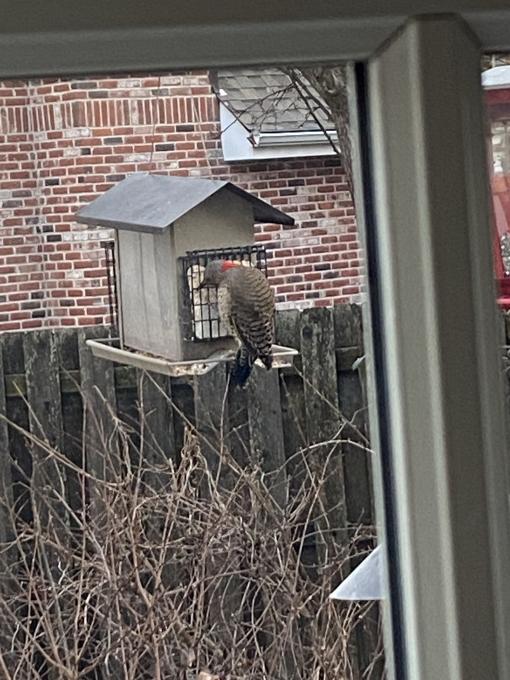
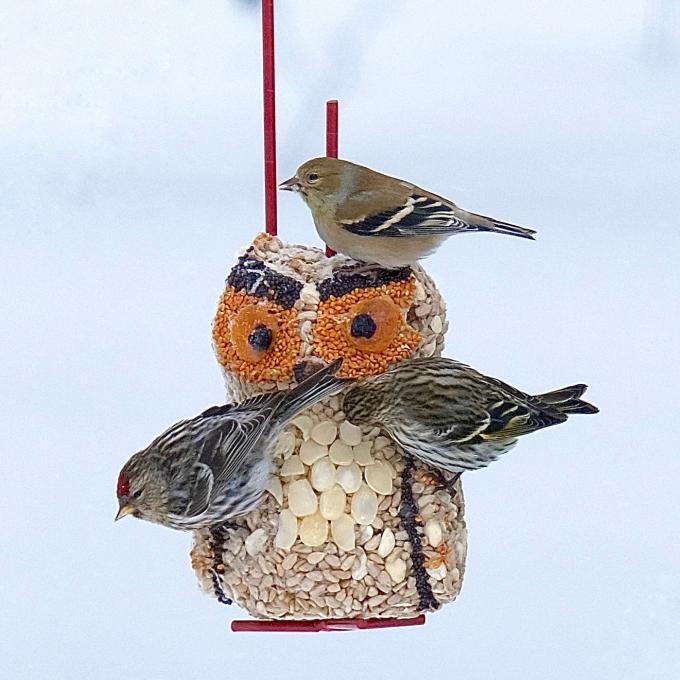 Goldfinch and Common Redpolls enjoying a Christmas gift
Goldfinch and Common Redpolls enjoying a Christmas gift  Tree Swallow
Tree Swallow 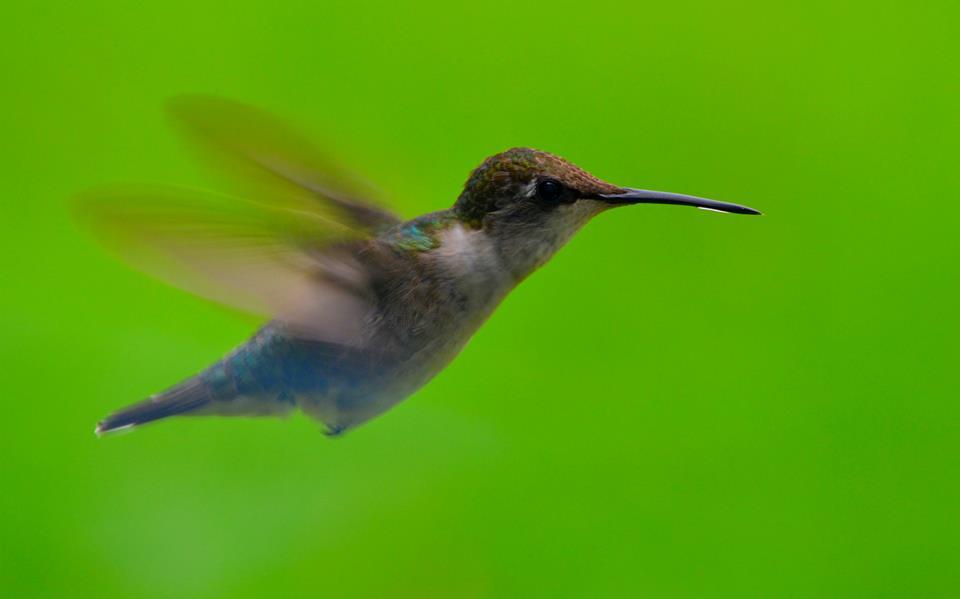
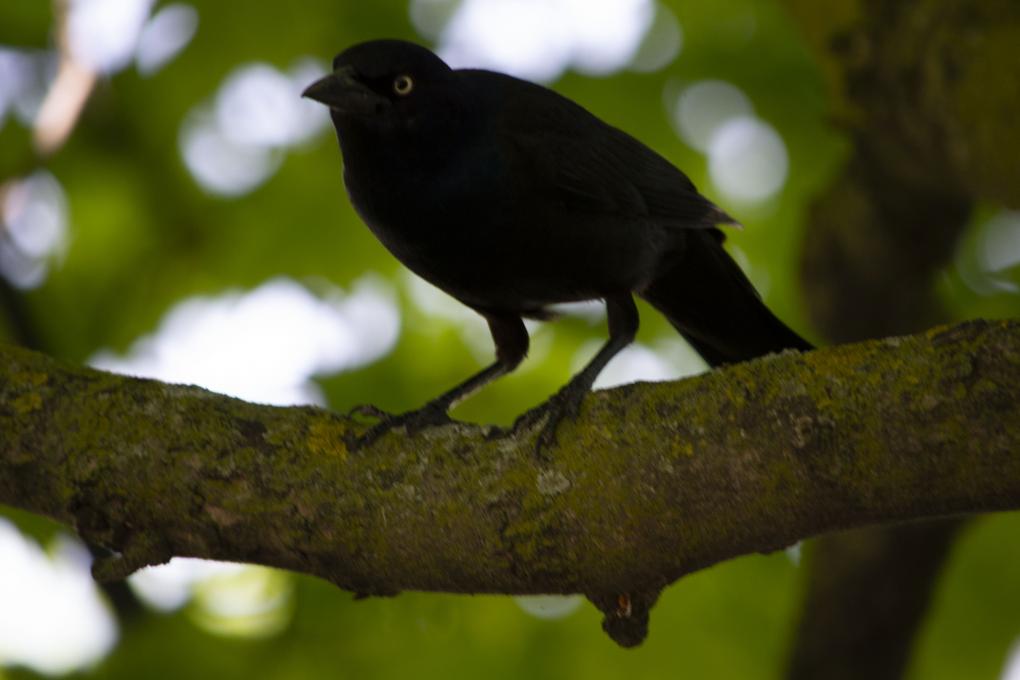


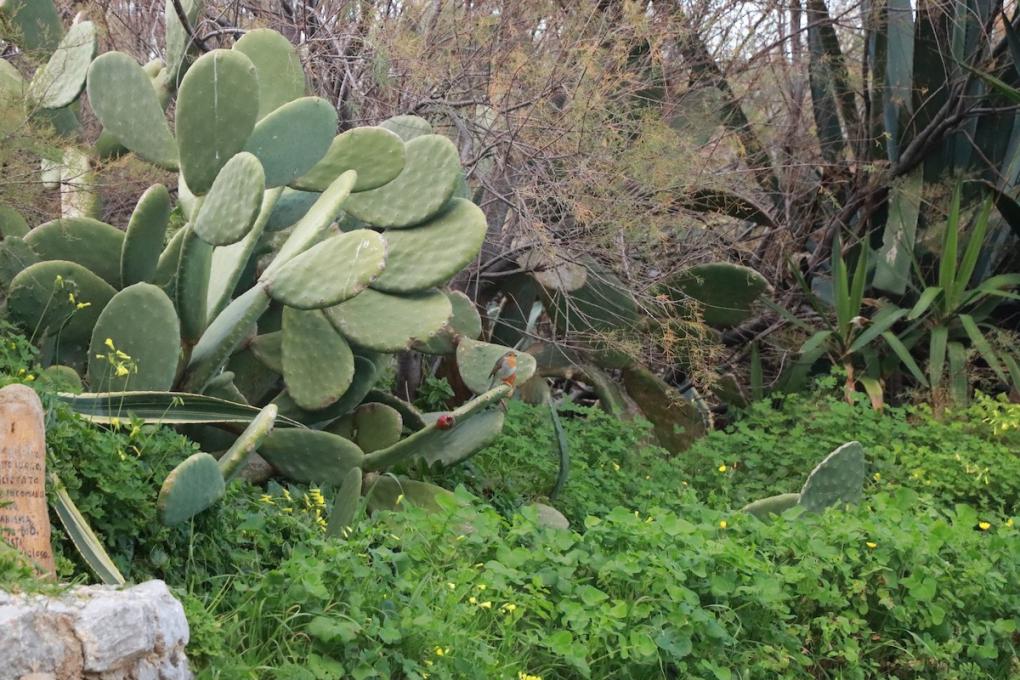 #3. In my neighborhood we mainly have Common Pigeons, and honestly they might as well be my favorite ones anyway. They are very funny guys and the color combinations they show are so interesting to learn about.
#3. In my neighborhood we mainly have Common Pigeons, and honestly they might as well be my favorite ones anyway. They are very funny guys and the color combinations they show are so interesting to learn about.
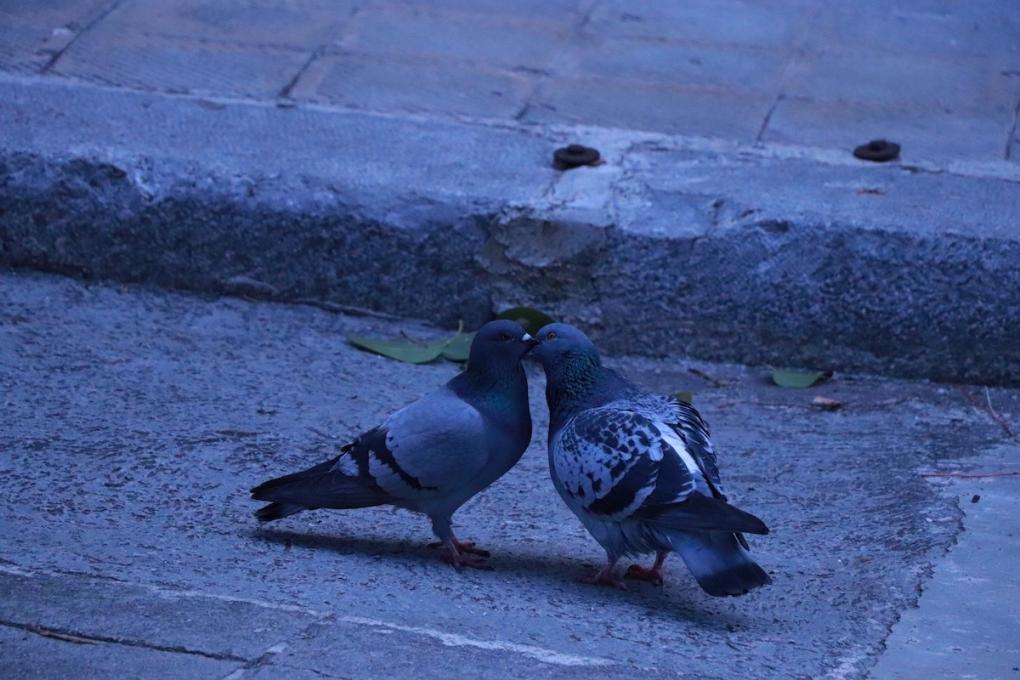


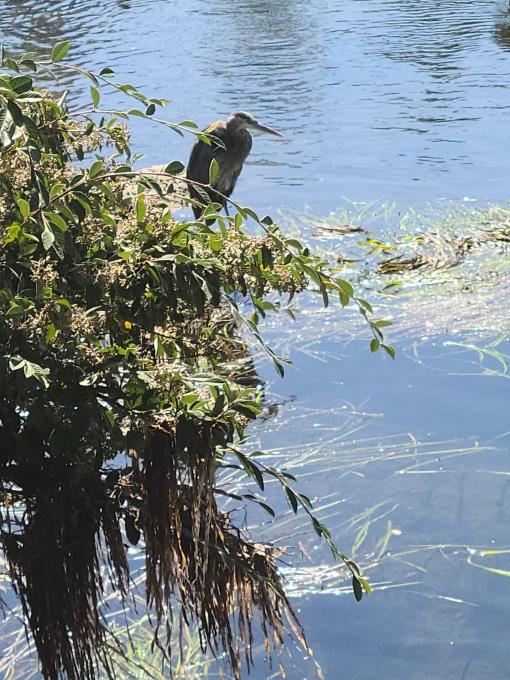
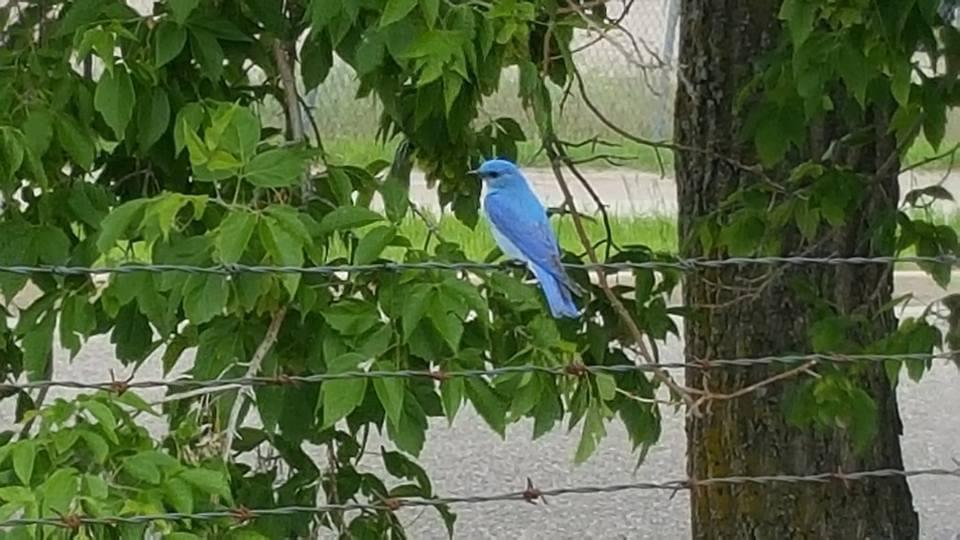


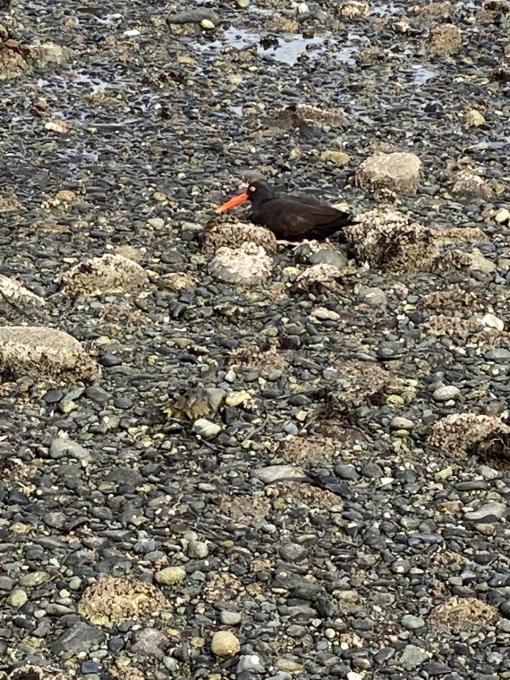 I found this little guy interesting. Its a black oyster catcher, not actually my favourite but an interesting shore bird. They were travelling in pairs with very striking/bright beaks and eyes. I found this guy on a beach in Vancouver Island.
My favourite bird in the area would have to be the Great Blue Heron - they are just so large and majestic.
I found this little guy interesting. Its a black oyster catcher, not actually my favourite but an interesting shore bird. They were travelling in pairs with very striking/bright beaks and eyes. I found this guy on a beach in Vancouver Island.
My favourite bird in the area would have to be the Great Blue Heron - they are just so large and majestic.  Above - Great-tailed Grackle
Above - Great-tailed Grackle
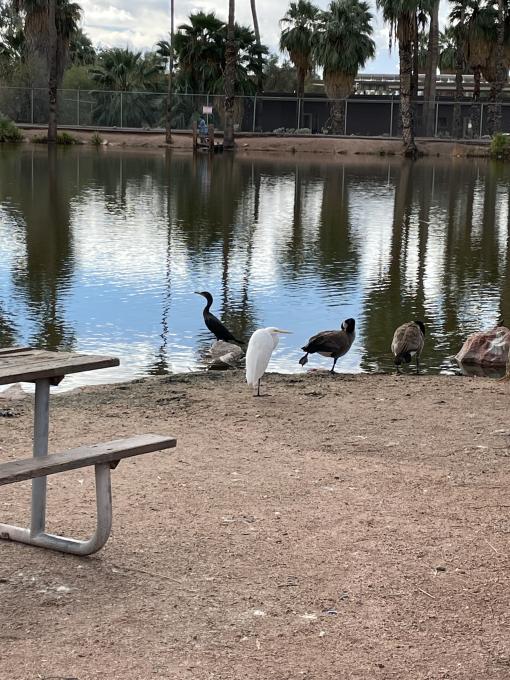 Above - Great Egret, Neotropic Cormorant, Canada Geese
Above - Great Egret, Neotropic Cormorant, Canada Geese
 Above - American Coot
Above - American Coot  I love the blue birds. Especially when they scope out our birdhouse like they are at an open house tour. Credit this picture to Mary Prochnow, my neighbor.
I love the blue birds. Especially when they scope out our birdhouse like they are at an open house tour. Credit this picture to Mary Prochnow, my neighbor.